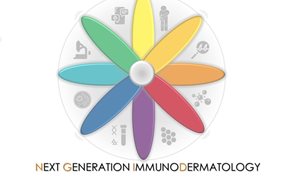 My name is Carine van der Vleuten, I am Dutch, dermatologist and associate professor on Vascular Anomalies, vascular dermatology and especially infantile hemangiomas and congenital vascular malformations. For this, I am working in (and am chairing) the Radboudumc Expertise Center for Hemangiomas and Congenital Vascular malformations Nijmegen (Hecovan). Theme Vascular damage.
My name is Carine van der Vleuten, I am Dutch, dermatologist and associate professor on Vascular Anomalies, vascular dermatology and especially infantile hemangiomas and congenital vascular malformations. For this, I am working in (and am chairing) the Radboudumc Expertise Center for Hemangiomas and Congenital Vascular malformations Nijmegen (Hecovan). Theme Vascular damage.
When you were a kid what did you want to be when you grew up? Can you tell us something about your child years.
As my mother was a nurse, I thought of a job in the medical scene. Becoming a doctor seemed very interesting, challenging (and cool). At the athenaeum, I graduated cum laude and was therefore immediately and almost automatically placed for the study of Medicine.
Becoming an engineer was my alternative: civil engineering ... building bridges. I still find bridges very fascinating. Maybe in a next life?
What was your previous academic training, where did you study and why that study?
Rather boring… I studied Medicine in Nijmegen from 1986-1994. Did my PhD in Nijmegen on psoriasis in 1997. In 1996, I started my internship to become a dermatologist at the Department of Dermatology of our Radboudumc.
I temporarily worked as a dermatologist in Oss, Eindhoven and Boxtel to replace a sick colleague.
In the year 2000, I was appointed as staff member dermatology at the Radboudumc, on ‘vascular dermatology’: phlebology, lymphology and congenital vascular anomalies. Besides that I have venereology and vulva-pathology in my portfolio.
The RIMLS motto is: ‘Today’s molecules for tomorrow’s medicine’. What does this mean for you?
… not so much molecules, but genes…
I combine being a doctor with doing research. Within our Hecovan expertise center for vascular anomalies, I have been seeing patients with congenital vascular (overgrowth) syndromes like Klippel-Trenaunay syndrome for more than 20 years. In the early days we did not understand the cause of this symptomatology and cases were classified clinically, but not always satisfactorily.
In recent years more and more has become known about the genetic causes. Nowadays, genetic somatic mosaicism as an explanation for the clinical picture is becoming clear and can be demonstrated by genetic investigations in tissue of our patients. In this work there was cooperation with the departments of pathology, genetics and surgery. By determining (activating somatic) mutations in tissue of our patients, better and causative classification of disease can be done which provides a clearer picture of the diagnosis and also offers targeted therapeutic options. As somatic mosaicism of the PIK3CA is common in our group, patients with severe complaints (pain, swelling, obstruction) can be treated with sirolimus, an inhibitor of the PI3-kinase pathway. With a ZonMw grant we are now doing a study on the effects of the mTOR inhibitor sirolimus in our patient group. Good news for our patients with no other treatment options.
Who is your great example as scientists? And please give a motivation why.
Judah Folkman (1933-2008), surgeon and scientist known for his research on (tumor) angiogenesis and one of the godfathers of the most famous vascular anomalies centers in the world, the Children’s Hospital in Boston, USA. His biography, ‘Dr. Folkman's War Angiogenesis and the Struggle to Defeat Cancer’ by Robert Cooke describes his crusade about the role of angiogenesis in (tumor) biology; this book was so very inspiring and made me visit the Vascular Anomalies Center at the Children’s Hospital in Boston in 2011. This gave me the opportunity to look behind the scenes for a few weeks and make contacts with colleagues, in this world top center of congenital vascular disorders.
Which research discovery that you have made has made you most proud?
In 2008, Dr Leaute Labreze (dermatologist in Bordeaux) serendipitously discovered the efficacy of propranolol in infantile hemangioma. A revolutionary discovery that changed the burden of the disease for many patients, baby’s less than 12 months of age. But worries on long term safety emerged, causing euphoria to be tempered. In our expertise center on vascular anomalies (Hecovan) we see many infantile hemangioma patients (~ 250 new patients per year) and with a large cohort of propranolol treated infantile hemangioma patients we were the first to investigate and publish long-term safety in 3 subsequent publications, in the Journal of the American Academy of Dermatology (JAAD), the dermatological journal with the highest impact factor.
Given unlimited finance what experiment would you perform?
So far it has not been easy to acquire funding for infantile hemangioma research, as infantile hemangioma is known as a benign and self-limiting condition. The exceptions to this often too favorably depicted prognosis are the hemangioma patients I treat: young babies with function-threatening hemangiomas, painful ulcerated hemangiomas, bleeding and severe deformation.
Infantile hemangioma is still an enigmatic condition. We still do not know what causes infantile hemangioma. With unlimited finance, I would like to find THE cause of this condition, which explains the entire clinical spectrum…. On the one hand to prevent the condition in the future in young babies, but certainly also because of my personal curiosity and fascination with this special disorder.
And further, as propranolol treatment has become indispensable, I want to establish the exact (side-)effect profile of all different beta-blockers, once and for all, by doing very specific neuropsychological research into possible subtle long-term effects of propranolol and the effectiveness of other, less lipophilic and/or more selective beta-blockers. With this, the decision on either or not to choose which treatment can be made with more background and hopefully confidence.
What does your working area (desk, office) look like and what does it say about you (or your research)?
Messy :-) although I, myself, may look organized, I have a disorderly desk and a disorderly house. I try to separate main issues from side issues and tidying my desk is not a main theme. Here I am a fan of Albert Einstein who once asked, ‘if a cluttered desk is a sign of a cluttered mind, of what, then, is an empty desk a sign?’
Nominate a colleague to be in the spotlight and what would you like to ask him or her?
More than one…
- Prof Peter van de Kerkhof, my former boss for more than 20 years and head of department of dermatology, because of his dynamic, smart personality, connecting force and big heart.
- Prof Elke de Jong, our head of department of dermatology ad interim (and hopefully to be) who is ambitious, intelligent, sensible, modest, critical and connecting. For me a great example of female power!
- Prof Leo Schulze Kool, interventional radiologist and Hecovan colleague, because of his unequaled technical skills and dedicated work attitude for our highly affected complex patient group.
What type of person are you, quick insights:
a) Mac or PC? : Macb) Theater or cinema? : Cinema
c) Dine out or dine in? : Dine out
d) Ferrari or Fiat? : Fiat
e) Shopaholic or chocoholic? : Shopaholic
f) Culture or Nature : Culture
Related news items

Grants for heart and kidney research Two awards to Radboudumc in Open Competition ENW-XS
21 July 2022Two researchers from the Radboudumc receive a grant from the NWO within the Open Competition of the Exact and Natural Sciences. They are Thijs Eijsvogels, who studies the heart, and Pieter Leermakers, who studies the kidneys.
go to page
Large NWA ORC grant awarded for national skin research: Next Generation ImmunoDermatology
23 March 2022Research for better treatment methods for chronic skin diseases.
go to page
Veni grants for RIMLS researchers
16 December 2021 NWO has awarded 89 promising young scientists Veni funding of up to 280,000 euros. Three of them are from Radboud Institute of Molecular Life Sciences (RIMLS). They can develop their own research ideas over a period of three years. go to page.aspx?width=439&height=263&ext=.png&type=BlockColumn1Zoom1)
Vote for the RIMLS Supervisor of the year
7 December 2021This is your chance to vote for your favourite candidate for supervisor of the year! Support and promote your ideal supervisor from the three nominees: Siroon Bekkering, Gerald Verhaegh and Jo Zhou. Please submit your vote the 20th of December 2021 at the latest.
go to page
Technology saves lives! 1.9 million euros from the Heart Foundation for developing smart watches
17 November 2021 Niels van Royen is proud to be part of this consortium, initiated by Judith Bonnes, to develop a wrist band for early detection of cardiac arrest. Together with Erasmus, Reinier de Graaf and Corsano Health. go to page
